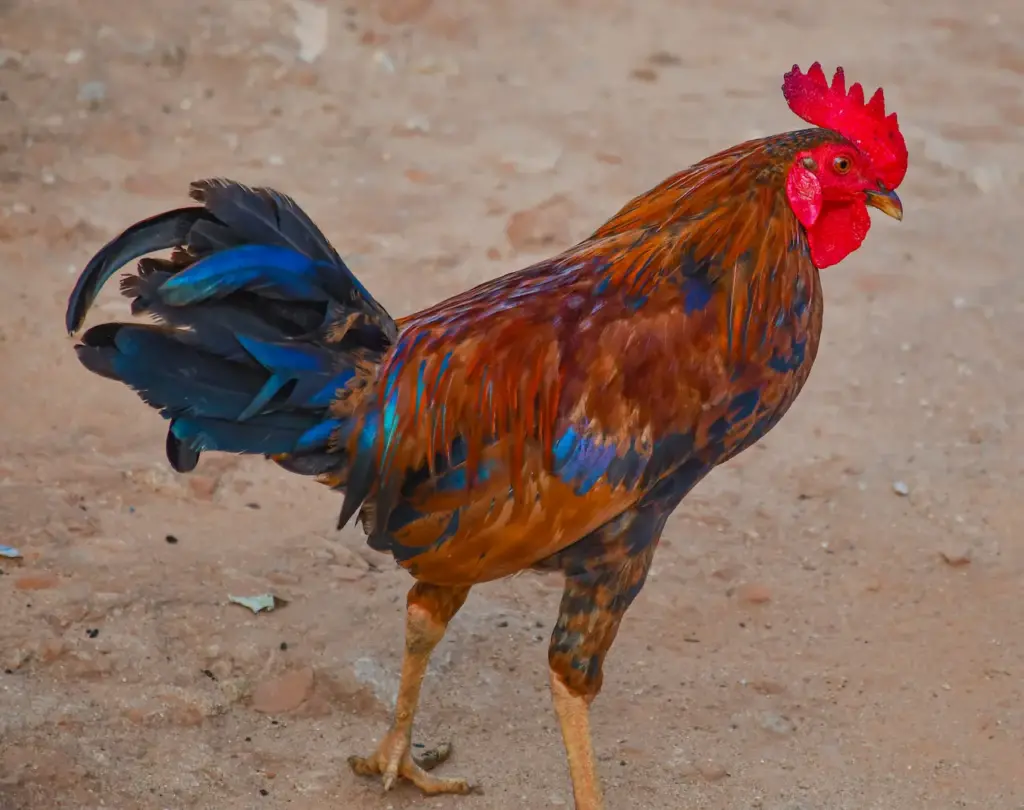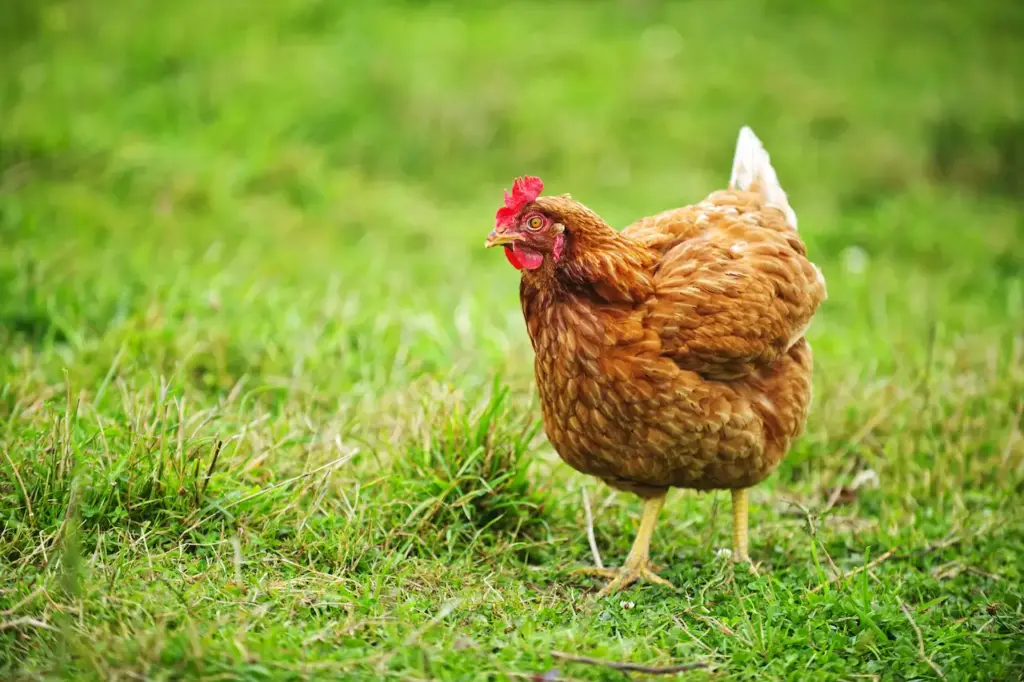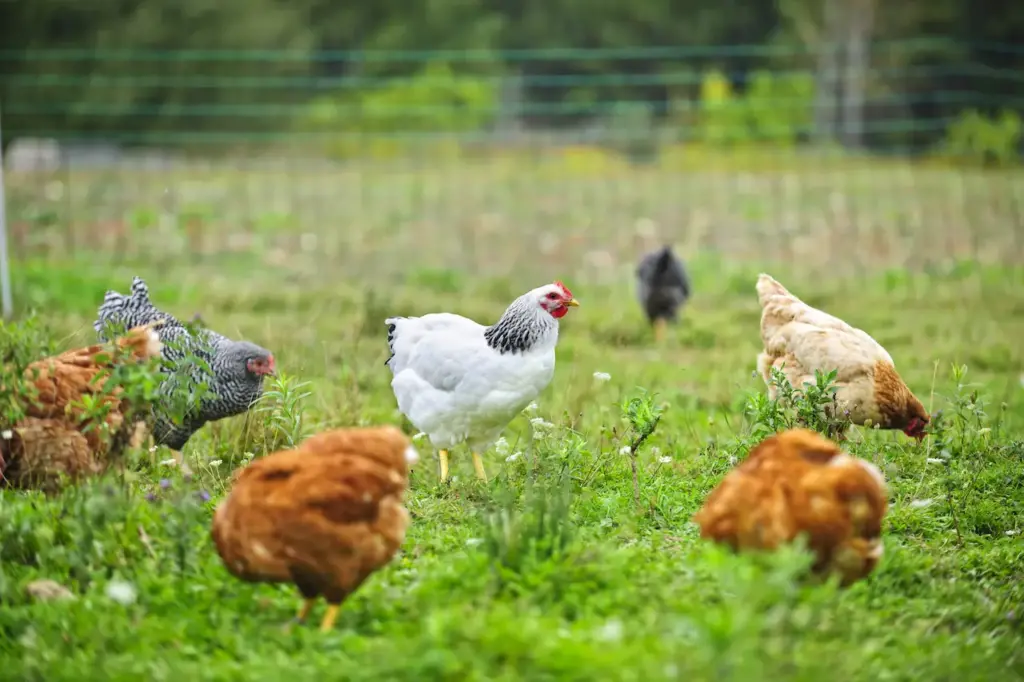What Eats A Chicken?
Categories
- Accipitridae (1)
- Acrididae (1)
- Algae (2)
- Alligatoridae (1)
- Amoebidae (1)
- Amphibians (3)
- Anatidae (1)
- Anguillidae (1)
- Arachnids (2)
- Bears (2)
- Big Cats (3)
- Birds (13)
- Bovidae (5)
- Bufonidae (1)
- Camelids (1)
- Cameras (1)
- Canines (13)
- Caridea (1)
- Carnivora (10)
- Castoridae (1)
- Cats (5)
- Cebidae (1)
- Cephalopod (1)
- Cervidae (2)
- Cetacean (1)
- Chondrichthyes (1)
- Crocodilia (2)
- Crustaceans (4)
- Culicidae (1)
- Cyaneidae (1)
- Dasypodidae (1)
- Dasyurids (1)
- Deer (1)
- Delphinidae (1)
- Desktop (1)
- Didelphidae (1)
- Dinosaurs (1)
- Dogs (13)
- Dolphins (2)
- Echinoderms (1)
- Education (10)
- Elephantidae (1)
- Equine (1)
- Erethizontidae (1)
- Erinaceidae (1)
- Farming (1)
- Felidae (5)
- Fish (5)
- Food Chain (31)
- Food Web (2)
- Formicidae (1)
- Frugivore (1)
- Gaming (1)
- Gastropods (1)
- Giraffids (1)
- Great Apes (2)
- Health Conditions (3)
- Herbivore (4)
- Hi-Fi (1)
- Hippopotamidae (1)
- Hominidae (1)
- Insects (10)
- Invertebrates (2)
- Keyboards (1)
- Laptops (1)
- Leporidae (1)
- Mammals (23)
- Marsupials (4)
- Mephitidae (1)
- Microchiroptera (1)
- Mollusks (2)
- Mongoose (1)
- Muridae (1)
- Nocturnal Animals (1)
- Odobenidae (1)
- Omnivore (2)
- Phasianidae (1)
- Phocidae (1)
- Plankton (1)
- Plants (2)
- Primate (1)
- Ranidae (1)
- Reptiles (7)
- Rhinocerotidae (1)
- Rodents (5)
- Salamandridae (1)
- Scarabaeidae (1)
- Sciuridae (2)
- Sharks (1)
- Shellfish (1)
- Sound (1)
- Spheniscidae (1)
- Suidae (1)
- Superfamily Papilionoidea (1)
- Theraphosidae (1)
- What Eats (5)
Popular domesticated birds raised for their flavorful meat and eggs include chickens. These feathery companions do, however, face certain predators that regard them as a delectable meal.
It is rare for commercial poultry farming to involve predators. However, predation is a significant worry for organic poultry growers and backyard flocks. The way flocks are kept and handled accounts for this discrepancy.
Predators frequently prey on chickens, including weasels, skunks, owls, raccoons, coyotes, foxes, and even house dogs and cats. However, remember there are more chicken predators than are on this list.
In this article, we will dive in deep to address the issue. If one of these predators discovers your flock, I’d like to share a list of common chicken predators and how to spot them based on the signs you left behind.
Table of Contents
TogglePredators Of Chicken
Understanding the actions of different animals can help explain how and why they assault flocks of chickens. Understanding the behavior of predators gives you background information that will help you recognize and deal with any threats to your flock.
Dogs and Coyotes
Free-ranging domestic pets in residential areas might threaten chickens‘ flocks. They frequently murder only for enjoyment. Dogs are derived from wolves and share some of their ancestor’s hunting instincts.
Not every dog will attack a flock of chickens. Certain breeds do make excellent flock guard dogs, in reality.
A dog’s breed, the presence of other dogs, and its prior experiences are some factors that influence the probability that it may attack a flock.
They are also known for the rapid hunt when they do this as a team.
They devour young chickens to the point of total consumption, usually leaving behind only a few damp feathers.
Certain breeds are more likely than others to pursue their prey. The presence of other dogs can intensify this tendency, which frequently leads to group behavior.
A dog is also more likely to repeat an assault on a flock of chickens if it has previously been successful in obtaining food.
Coyotes typically hunt in pairs; however, occasionally, huge groups have been spotted roaming together. Although mainly nocturnal—active at night—coyotes are frequently sighted during the day.
They used to be diurnal, meaning they were active during the day, but as a result of adaptation to human pressure on their environment, they have become more nocturnal.
House cats
Domestic cats will kill young birds even if they are fed adequately. Due to their untidy eating habits, cats frequently leave chunks of their meal in visible places after they have eaten.
They usually consume the meaty parts of birds, leaving the skin and feathers on them. Cats, however, frequently devour the entire bird—minus the wings and straggling feathers—when it comes to smaller birds.
Moreover, cats often leave their tooth marks on any exposed prey bone that they
Bobcats
The bobcat, the most prevalent wildcat in the US, is only around twice as large as a conventional house cat. Bobcats can see in dim light, much like cats can.
They will attack at any time of day, although they prefer to hunt in the twilight hours of dawn and dusk. They can quickly steal one or two hens from your flock.
A bobcat can consume a whole bird or transport the remains during one meal. Although they prefer wooded areas, bobcats occasionally enter backyards for food, particularly when housing encroaches on their natural range.
Opossums
Being omnivores, opossums consume various foods, including eggs, fish, birds, mushrooms, and fruits and vegetables.
An opossum would often kill one bird at a time during a raid on a poultry coop, frequently mauling its prey. It chews the shells into little bits and then leaves them in the nest, resulting in mashed and untidy eggs.
Typically, opossums start eating adult poultry at the cloacal entrance. They devour young fowl to the fullest, usually leaving only a few damp feathers behind.
Raccoons
In one night, raccoons break into chicken buildings and steal many birds. They frequently rip, gnaw, and occasionally consume the innards of birds.
To consume the eggs, they may pull them out of the nest and carry them away, generally no more than 9 meters (28 feet) from the nest.
Raccoons are drawn to metropolitan areas by the abundance of food that garbage cans and landfills can provide. After settling down, raccoons will look for other food sources, such as flocks of chickens raised in backyards.
Skunks
Skunks do not often kill adult birds. When a skunk attacks a flock, it kills only one or two birds while severely mauling the others.
Moreover, skunks like eggs. A skunk would often crack open an egg at one end and lick the contents by poking its snout through the opening.
After being consumed by a skunk, eggs may appear hatching, but their opening edges are squashed. A skunk may take eggs from a nest, although they are rarely carried more than one meter (3 feet) away.
Foxes
Poultry flocks are preyed upon by foxes, especially red foxes. Although they often bite a bird in the throat, foxes can also kill it by repeatedly biting its neck and back.
Typically, the only signs of a fox’s presence in the hen house are a few feathers and drips of blood. The deceased bird is taken by the fox, usually to its lair. And foxes devour eggs.
Typically, they leave the eggshells next to the nest and crack open the eggs just enough to suck out the contents. Most foxes are found in forested regions and open plains, where they make their underground burrows.
For dens, they may use hollow logs. The only fox species that can easily climb trees is the grey fox, which may burrow in a tree’s hollow.
Weasels
It has been said that the tiniest predator alive is the least WeaselWeasel. It has short limbs, a long neck, a small head, and a slim body. The tail makes up most of the length of the least WeaselWeasel, which typically measures 165 to 205 millimeters (6-1/2 to 8 inches).
It weighs just 30 to 55 grams (1 to 2 ounces). They are seldom ever observed and confined.
They don’t hibernate; they remain busy day and night, summer and winter.
The Least WeaselWeasel bites its victim in the base of the skull after encircling its body and limbs around it.
Lesser weasels can fit through apertures as small as 1/4 of an inch. As a result, they can usually pass through chicken wire.
Weasels are voracious eaters because they have to consume four times their body weight in food every day.
Owls
The great horned owl is the owl that feeds on flocks of chickens the most frequently. Barn owls and screech owls often do not cause problems for flocks of chickens. Because they are more active at night, owls usually prey on birds at that time.
The great horned owl inhabits various environments, including grasslands, open fields, and coasts.
A wide variety of animals, including chickens, ducks, and other fowl, are consumed by great horned owls.
Conclusion
In this article, we went deep to discuss poultry predators by addressing many of them in the maximum aspects which we could, like how dogs and coyotes, skunks, weasels, foxes, raccoons, bobcats, house cats, and owls perform their prey to hunt chickens.
Going through this blog post, you can measure the cautions and threats to your poultry safety and protection.



